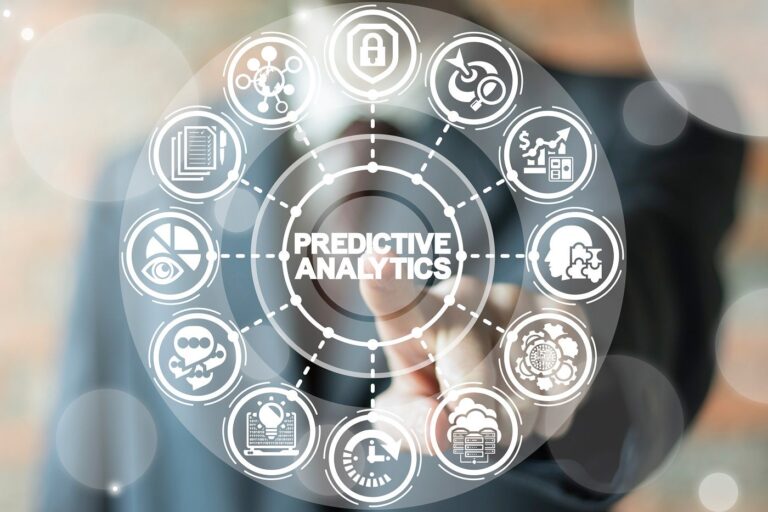Predictive analytics is a process that uses statistics and modeling techniques to make informed decisions and predictions, based on current and historical data, about future outcomes. Businesses use these techniques, which include data mining, predictive modeling, and machine learning, to assess risks and forecast business trends.
As a result, business leaders can use predictive analytics to increase the chances of success for many initiatives or to test a variety of scenarios.
SEE: What Is Data Storage? (TechRepublic)
How does predictive analytics work?
Predictive analytics platforms look at historical data and try to spot patterns. The process relies on data such as customer purchases, weather information, or banking habits, and statistics such as regression analysis and assumptions that the future will follow trends from the past.
For example, it has the potential to spot customers who are likely to cancel a service or not renew it, identify transactions that could be fraudulent, or create a preventive maintenance schedule.
Some types of predictive analytics software use machine learning to revise algorithms based on learnings from the data collected over time, continuously improving prediction accuracy. These platforms analyze large volumes of data to identify patterns, correlations, and trends using algorithms and statistical techniques.
SEE: What Is ETL? (TechRepublic)
Types of predictive analytical models
The best model for your business is relative to the type and amount of data available, the nature of the problem you want to solve, and the desired outcome.
Clustering models
These are used to group similar observations based on their characteristics, without predefined categories. There are various types of clustering models, including centroid-based, density-based, distribution-based, and hierarchical.
Use cases: Customer segmentation, anomaly detection, and market basket analysis.
Time series models
These are used to predict future values of a variable based on a sequence of data points collected over time.
Types of time series models include exponential smoothing, autoregressive integrated moving average models, autoregressive moving average, moving average, and seasonal autoregressive integrated moving average.
Use cases: Forecasting stock prices, product demand, weather predictions, and website traffic.
Classification models
These are used to predict the correct label from the input values given for training. Classification models predict the category or class an observation belongs to based on its characteristics. Examples include logistic regression, random forests, and support vector machines.
Use cases: Fraud detection, customer segmentation, spam filtering, sentiment analysis, and medical diagnosis.
Regression models
These are statistical models that attempt to predict the relationship between a dependent variable and one or more independent variables. Examples include linear, polynomial, and multiple regression.
Use cases: Predict sales or financial data.
Ensemble models
These models combine predictions from multiple models to improve overall performance and robustness. Examples include random forests, gradient boosting, and stacking models.
Use cases: Any prediction task where improved accuracy is desired.
Decision trees
These are a type of predictive model that uses a branching structure to map out a decision-making process. Each branch represents a different decision or outcome based on the input variables in the data.
Use cases: Classification problems where the goal is to assign each data instance to a predefined class or category.
SEE: What Is a Graph Database? (TechRepublic)
Benefits of predictive analytics
- Enhanced financial performance: Organizations can optimize processes, such as budgeting, forecasting, and risk management.
- Better customer targeting: It can segment customers based on their behavior, preferences, and buying patterns. This enables businesses to tailor their marketing strategies.
- Fraud detection: Financial services, insurance, and e-commerce companies can use it to detect unusual patterns or anomalies that may indicate fraudulent activities.
- Improved decision-making: By using historical data and advanced algorithms, it can provide insights and predictions that help businesses make better choices.
SEE: What Is Data Quality? (TechRepublic)
Predictive analytics use cases
Several use cases are listed below.
Financial services
Financial institutions often use it to identify patterns and anomalies in transaction data for fraud detection, assess the credit of borrowers to predict the likelihood of a customer defaulting on a loan, and make data-driven investment decisions.
Marketing
By analyzing factors such as transaction history, customer service interactions, and demographic information, predictive models can flag customers with a higher likelihood of leaving and enable personalized retention efforts. It can also identify customers who are more likely to purchase certain products or services, enhancing customer acquisition and retention.
Telecommunications
Telcos can use it to help them minimize downtime, improve service quality, and enhance customer satisfaction. Using this technology to predict potential network issues based on past events and performance metrics allows for proactive maintenance and optimization.
Manufacturing
It can be used in manufacturing to optimize equipment maintenance. By analyzing real-time sensor data and historical maintenance records, predictive models can identify patterns and predict when equipment is likely to fail. This allows manufacturers to schedule maintenance proactively, reducing downtime, and improving overall operational efficiency.
SEE: How to Measure Data Quality (TechRepublic)
Popular predictive analytics tools
Tools can range from no-code platforms and data lakes to machine learning algorithm libraries. Some platforms are complete workspaces, others integrate with existing tools, and options for cloud and on-premises deployments will vary as well. Some top tools are below.
- Alteryx allows users to create and deploy analytic models without the need for coding. It ranks best for data preparation, blending, and analysis.
- Altair RapidMiner has 1,500+ native algorithms, data prep, and data science functions. It supports data integration from various sources and offers visual workflows for creating and deploying predictive models.
- Microsoft Azure Machine Learning is a cloud-based platform that offers a drag-and-drop interface and automated machine learning capabilities.
This article was originally published in December 2023. It was updated by Antony Peyton in June 2025.

